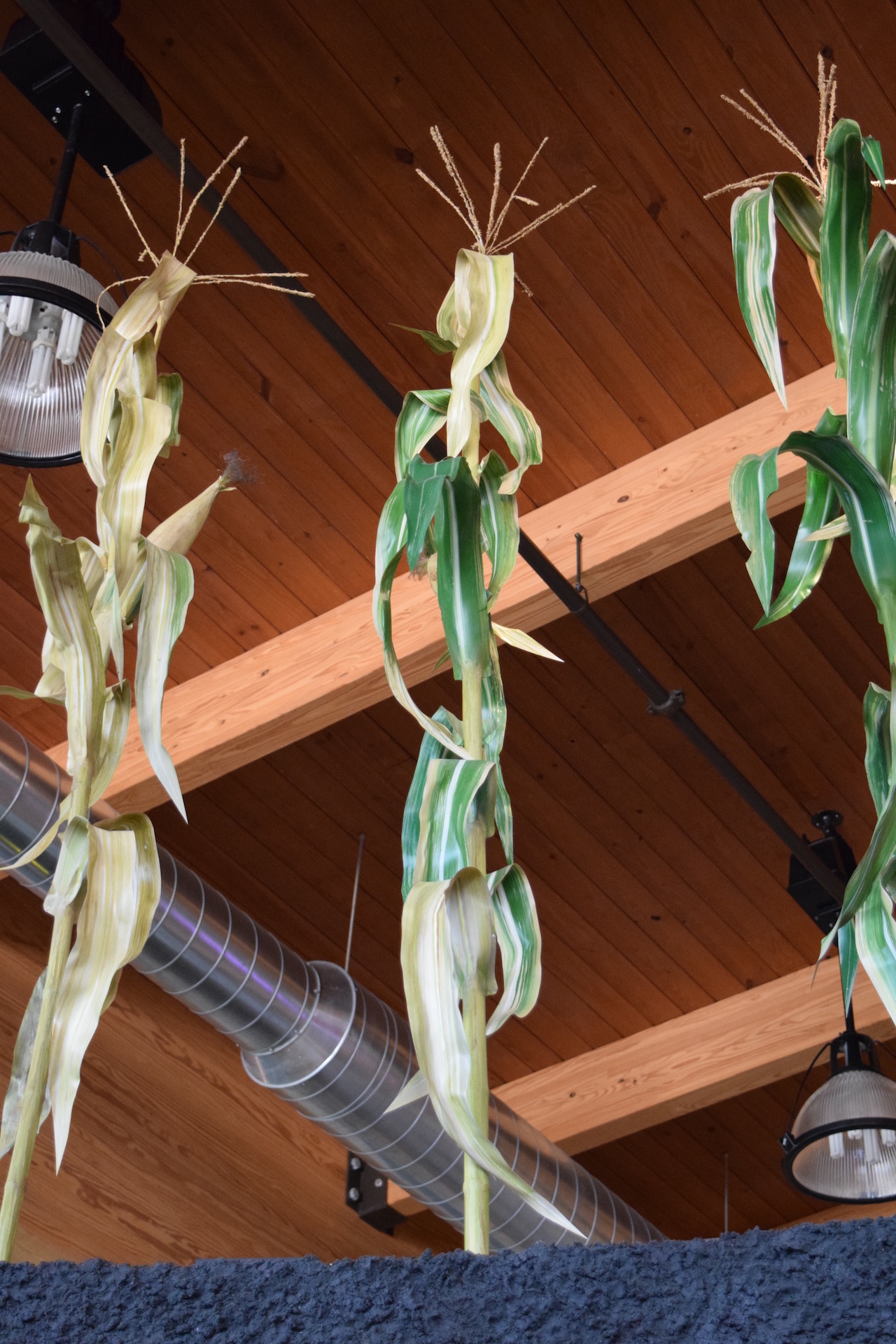Behind the Scenes: The Making of Artificial Corn Plants
The corn featured in the AgroLiquid IQhub didn’t come from a seed. It came from our workshop. In today’s post, we’ll give you a look behind the scenes at the making of these incredible artificial corn plants.
 (You can view this agricultural exhibit on our custom products page.)
(You can view this agricultural exhibit on our custom products page.)
It Takes Skill
They look just like your average corn stalks. But that’s the incredible thing about them. With a lot of ingenuity and a ton of time, the fabrication team here at Exhibit Farm figured out how to take synthetic materials and transform them into corn plants that could fool just about anyone. As one of our craftsmen pointed out, in order to make a product like that so perfectly replicate the actual plant, you need the skills of a cake-decorator, a painter, an engineer, and a woodworker all at once. Thankfully, people like that exist, and some of them work here on our fabrication team.
It took about a month for our folks to figure out what materials and methods to use in order to make the corn plants. But they finally settled on the stuff that really works. And here are some of the highlights.
The Leaves
What do you get when you cross polycarbonate with paint? Well, normally, nothing much. But when you have a skilled artist on the job, you can end up with something like the leaves you see on these corn plants.
Made out of a durable polycarbonate material, these leaves aren’t even close to being as papery and leafy as they look. But, to give the plastic that leafy appearance, the craftsmen applied some texture to the material before attacking it with the paint. This way, the plastic could mimic the rough surface of an average corn leaf.
 They then hand-painted the leaves. This method of applying the color allowed the fabrication team to give accurate detail to each individual part. After the color was perfected, they applied a little heat to the polycarbonate. This made it possible for a craftsman to hand-form each leaf into an accurate shape. And he did that to every piece. That’s a lot of leaves.
They then hand-painted the leaves. This method of applying the color allowed the fabrication team to give accurate detail to each individual part. After the color was perfected, they applied a little heat to the polycarbonate. This made it possible for a craftsman to hand-form each leaf into an accurate shape. And he did that to every piece. That’s a lot of leaves.
The Stalk
If you’ve looked closely at an actual corn stalk, you probably noticed that the leaves themselves actually wrap around the stalk. The parts we recognize as leaves, though, spread out from the stalk due to a bend in the leaf. This bend is actually quite complex, making it hard to replicate with any other material. As one of our craftsmen pointed out, “Mother Nature has some cool stuff happening here.” While actual corn leaves maintain a strong connection with the stalk despite this bend, the polycarbonate we used would have snapped if it had been forced to bend in that way. So, to mimic the bend without damaging the plastic, the craftsmen connected two pieces at a seam when they attached the leaves to the stalk. They carefully concealed the seam with more paint and other materials.
 Mimicking this bend in the leaf was the hardest part of the whole project.
Mimicking this bend in the leaf was the hardest part of the whole project.
The Accessories
To add to the realism factor of these artificial corn plants, the craftsmen added a couple of accessories to the sculptures–namely, the ears of corn and the tassels. They mimicked the texture and appearance of the tassels by sticking several pieces of wire in adhesive. Then, they rolled these adhesive-covered wires in a seed-like substance, allowing the grainy particles to stick on to the wires. The end result looks something an awful lot like the tassel, which is the pollen-producing flower at the top of the corn plant.
The ears of corn and the corn silks came from a combination of actual corn husks, foam, and monofilament. To make the silk, the craftsmen used cleverly disguised monofilament and arranged them at the tops of the corn ears. These final pieces brought the finishing touches to our artificial corn plants.
You can view these impressive corn plant sculptures at the AgroLiquid IQhub in St. Johns, Michigan.